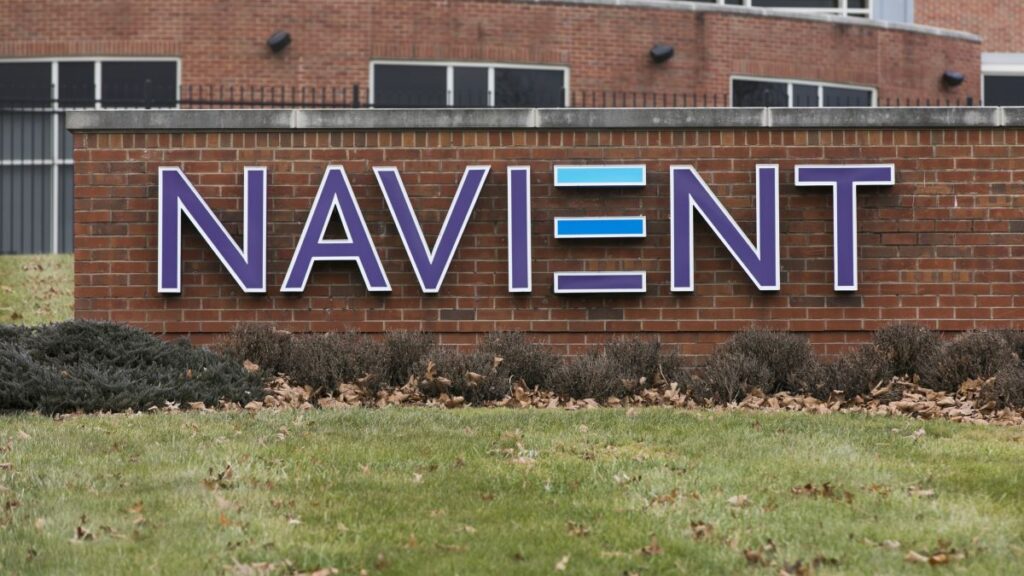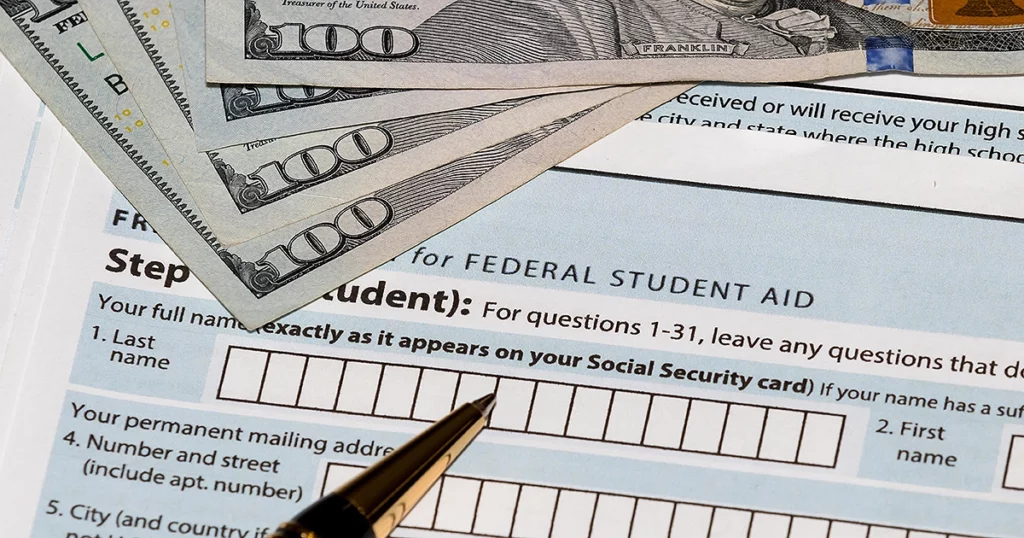Navient Student Loans: Managing Your Educational Finances

Student loans are crucial in helping individuals pursue higher education and achieve their academic goals. Navient, one of the prominent loan servicing companies in the United States, supports borrowers in managing their student loans efficiently. In this article, we will delve into the details of Navient student loans, exploring the types of loans offered, the application process, repayment options, loan servicing, forgiveness programs, credit implications, and alternatives to consider. Whether you are a current borrower or planning to apply for student loans, understanding Navient and its services is essential for effectively navigating your educational finances.
Introduction to Navient Student Loans
Student loans are a financial tool that enables students to cover their education costs, including tuition fees, textbooks, accommodation, and other related expenses. Navient serves as a loan servicer, assisting borrowers in managing their loans throughout the repayment process. By providing essential services such as billing, loan consolidation, repayment options, and customer support, Navient plays a significant role in helping borrowers successfully repay their educational debts.
Understanding Navient as a Loan Servicing Company
What is Navient?
Navient Corporation, formerly part of Sallie Mae, is a publicly-traded loan management and servicing company. Established in 2014, Navient handles many federal and private student loans in the United States. With its expertise in the student loan industry, Navient focuses on supporting borrowers by offering various tools, resources, and repayment options tailored to individual needs.

Navient’s Role in the Student Loan Process
Navient’s involvement begins after you secure a student loan, whether a federal loan through the Department of Education or a private loan from a financial institution. As a loan servicer, Navient steps in to manage your loan account, provide the necessary information, collect payments, and offer assistance throughout the life of your loan. They aim to ensure a smooth borrowing experience and help borrowers navigate the complexities of the repayment process.
Types of Navient Student Loans
Navient services various student loans, including federal and private loans. Understanding the differences between these loan types is crucial for borrowers to make informed decisions about their educational finances.
Federal student loans serviced by Navient
The U.S. Department of Education funds federal student loans and offer several advantages, such as fixed interest rates, flexible repayment options, and potential loan forgiveness programs. Navient services the following types of federal loans:
Direct Subsidized Loans: These loans are available to undergraduate students with financial need. The government pays the interest on subsidized loans while the borrower is enrolled in school.
Direct Unsubsidized Loans: These loans are available to undergraduate and graduate students regardless of financial need. Unlike subsidized loans, interest begins accruing immediately.
Direct PLUS Loans: These loans are available to graduate students and parents of dependent undergraduate students. They require a credit check and may have higher interest rates than other federal loans.
Federal Consolidation Loans: Navient also services federal consolidation loans, which allow borrowers to combine multiple federal loans into a single loan with a fixed interest rate.
Private student loans serviced by Navient
In addition to federal loans, Navient also services private student loans. Private loans are provided by financial institutions such as banks, credit unions, and online lenders. Unlike federal loans, private loans typically have variable interest rates and may require a co-signer. Navient works with borrowers to manage and repay their private student loans efficiently.
Applying for Navient Student Loans
Before considering Navient student loans, it is essential to understand the application process and eligibility criteria.
Eligibility criteria for Navient student loans
The eligibility requirements for Navient student loans vary depending on the type of loan. However, some common criteria include:
Being a U.S. citizen or eligible non-citizen
Enrolling in an eligible educational institution
Demonstrating financial need (for certain federal loans)
Meeting credit and income requirements (for private loans)
The application process for federal loans
To apply for federal student loans serviced by Navient, you must complete the Free Application for Federal Student Aid (FAFSA). The FAFSA determines your eligibility for various federal aid programs, including grants, work-study, and loans. Once your FAFSA is processed, you will receive a financial aid award letter detailing the types and amounts of loans you qualify for. To accept the loan offer, you must follow the instructions provided by your school’s financial aid office.
The application process for private loans
Suppose you are considering private student loans serviced by Navient. In that case, you can start by researching and comparing loan options from different lenders. It’s important to evaluate interest rates, repayment terms, and any fees associated with the loan. Once you choose a lender, you must complete their loan application, which may require providing information about your educational institution, program of study, cost of attendance, and personal financial details. The lender will assess your application and determine whether to approve the loan. If approved, you will receive loan disclosure documents outlining the terms and conditions of the loan.
Repayment Options and Strategies
After securing a Navient student loan, it is crucial to understand the available repayment options and develop a repayment strategy that aligns with your financial situation.
Overview of repayment plans offered by Navient
Navient offers various repayment plans to accommodate different borrowers’ needs. Some common repayment options include:
Standard Repayment Plan: This plan involves fixed monthly payments over a specified repayment period (usually 10 years for federal loans). It suits borrowers who can afford higher monthly payments and want to repay their loans quickly.
Graduated Repayment Plan: With this plan, monthly payments gradually increase. It is ideal for borrowers who expect their income to increase over the years, initially allowing them to start with lower payments.
Income-Driven Repayment Plans: Navient offers several income-driven repayment plans, including Income-Based Repayment (IBR), Pay As You Earn (PAYE), and Revised Pay As You Earn (REPAYE). These plans adjust your monthly payments based on your income and family size, making them more manageable for borrowers facing financial challenges.
Extended Repayment Plan: This plan extends the repayment period beyond the standard 10-year term, resulting in lower monthly payments. It is suitable for borrowers who need more time to repay their loans but are willing to pay more interest over the long run.
Income-driven repayment plans
Income-driven repayment plans, such as IBR, PAYE, and REPAYE, are particularly beneficial for borrowers with lower incomes or financial hardship. These plans cap your monthly payments at a percentage of your discretionary income and provide loan forgiveness options after a certain number of qualifying payments. It is essential to carefully review the requirements and implications of each income-driven plan to determine which one best suits your circumstances.
Loan consolidation options
Navient also offers loan consolidation services, allowing borrowers to combine multiple federal loans into one new loan. Loan consolidation simplifies repayment by combining various loans into a single monthly payment. It can also lower your monthly payment by extending the repayment term. However, it’s important to note that loan consolidation may result in paying more in interest over the life of the loan.
Strategies to manage and repay Navient student loans effectively

To effectively manage and repay Navient student loans, consider the following strategies:
Create a budget: Develop a monthly budget to track your income and expenses. Allocate a portion of your income towards loan payments while ensuring you have enough for essential living expenses.
Explore loan forgiveness programs: If you work in public service or specific fields such as education or healthcare, you may be eligible for loan forgiveness programs. Research and understand the requirements of programs like Public Service Loan Forgiveness (PSLF) or Teacher Loan Forgiveness to determine if you qualify.
Make extra payments: If your financial situation allows, consider making additional payments towards your loan principal. Paying more than the minimum required can reduce the overall interest accrued and pay off your loan faster.
Automate your payments: Set up automatic payments with Navient to ensure you never miss a deadline. This helps you avoid late fees and can make your repayment process more convenient and streamlined.
Seek financial advice: If you’re facing difficulties with loan repayment or need personalized guidance, consider contacting a financial advisor or student loan counselor. They can provide expert advice based on your situation and help you explore options for managing your Navient student loans effectively.
By implementing these strategies and staying proactive in managing your Navient student loans, you can take control of your educational finances and work towards a debt-free future.
Navient Loan Servicing and Customer Service
Navient provides a user-friendly platform that allows borrowers to access their loan accounts, make payments, and seek assistance when needed. Understanding navigating Navient’s loan servicing and accessing its customer service resources is crucial for a smooth borrower experience.
Accessing your Navient account
To access your Navient account, visit their official website or download the Navient mobile app, available for both iOS and Android devices. Once logged in, you can view your loan details and payment history and make online payments securely.
Managing payments and loan information
Navient offers various payment methods to accommodate borrower preferences. You can make payments online through their website or app, set up automatic payments, or by phone. It’s important to ensure your payments are made on time to avoid late fees and negative impacts on your credit.
Additionally, Navient provides detailed loan information, including the outstanding loan balance, interest rate, and repayment status. Regularly reviewing this information can help you stay informed about your loan progress and identify any discrepancies or issues that may arise.
Contacting Navient’s customer service
Suppose you have questions or need assistance regarding your Navient student loans. In that case, their customer service team is readily available to help. You can contact Navient through various channels, including phone, email, or online messaging. Be prepared to provide suitable loan and personal information to authenticate your identity and expedite the resolution of any concerns or inquiries you may have.
Navient’s customer service representatives can assist you with various topics, including loan repayment options, account management, understanding your loan terms, and addressing any issues you may encounter during repayment.
Loan Forgiveness and Discharge Programs
Navient borrowers may be eligible for loan forgiveness or discharge programs that provide relief from their student loan debt under specific circumstances.
Public Service Loan Forgiveness (PSLF)
The Public Service Loan Forgiveness (PSLF) program is designed for borrowers working full-time in public service or nonprofit organizations. To qualify for PSLF, you must make 120 qualifying payments while employed in an eligible organization. After meeting these requirements, the remaining balance on your eligible federal student loans may be forgiven.
Teacher Loan Forgiveness Program
The Teacher Loan Forgiveness Program is aimed at teachers who work in low-income schools or educational service agencies. Under this program, eligible teachers can receive loan forgiveness of up to $17,500 on their direct subsidized and unsubsidized loans or their subsidized and unsubsidized Federal Stafford Loans.
Loan discharge options for specific circumstances
Navient borrowers may also be eligible for loan discharge in certain situations, such as:
Total and Permanent Disability Discharge: If you have a physical or mental impairment that prevents you from working and repaying your loans, you may be eligible for loan discharge based on total and permanent disability.
Closed School Discharge: If your school closes while you’re enrolled or shortly after your withdrawal, you may qualify for a discharge of your federal student loans.
Discharge due to death: In the unfortunate event of a borrower’s death, federal student loans serviced by Navient are generally discharged, relieving the borrower’s family or estate from the responsibility of repayment.
Understanding the eligibility criteria and documentation requirements for these forgiveness and discharge programs. Research the specific details provided by Navient and the Department of Education to determine if you qualify for any of these options.
Dealing with Navient Loan Issues and Complaints
Borrowers may encounter issues or face challenges with Navient loan servicing at times. Understanding how to address these problems effectively and seek resolutions is crucial.
Common problems faced by borrowers
Some common issues borrowers may experience include:
Billing errors or discrepancies in loan balances
Difficulty accessing loan information or account management tools
Unresponsive or unsatisfactory customer service experiences
Issues with loan payments, including misallocations or delays
Difficulty navigating repayment options or understanding loan terms
Steps to resolve issues with Navient
If you encounter issues with your Navient student loans, consider the following steps to address and resolve them:
Gather relevant documentation: Collect any relevant loan documents, payment receipts, correspondence, or records related to the issue you’re facing. Having this information readily available will help you communicate your concerns more effectively.
Contact Navient’s customer service: Initiate contact with Navient’s customer service through their designated channels, such as phone, email, or online messaging. Clearly and concisely explain the issue you’re experiencing and provide any necessary documentation or details.
Escalate the issue if necessary: If your initial contact with customer service does not lead to a satisfactory resolution, consider escalating the issue to a supervisor or manager. Request their assistance in resolving the problem or addressing any concerns you have.
Document all interactions: Record all interactions, including dates, times, names of representatives spoken to, and summaries of the conversations. This documentation can be valuable if you need to escalate the issue further or file a complaint.
File a complaint if needed: If your attempts to resolve the issue directly with Navient are unsuccessful, you can file a complaint with relevant regulatory bodies or consumer protection agencies. Please provide them with the necessary information and documentation to investigate your complaint further.
It’s important to remain persistent and assertive in seeking resolutions to any issues you encounter with Navient. You can increase the likelihood of finding a satisfactory resolution by staying proactive and effectively communicating your concerns.
Conclusion
Navient plays a significant role in servicing federal and private student loan forgiveness, offering borrowers various repayment options and assistance. Understanding the different types of Navient student loans, the application process, repayment strategies, and available forgiveness programs are crucial for managing educational debt effectively.
While Navient strives to provide quality loan servicing, borrowers may encounter challenges or issues. By being aware of available resources, contacting customer service when needed, and following the appropriate steps to address problems, borrowers can navigate the student loan repayment process more confidently and effectively.
Remember, effective management of your Navient student loans involves staying informed, seeking assistance when needed, and proactively working toward your financial goals. Take control of your educational finances and strive towards a successful repayment journey.
Frequently Asked Questions
1. Can I consolidate my Navient student loans?
Yes, Navient offers loan consolidation services for federal student loans. Consolidating your loans can simplify the repayment process by combining multiple loans into one with a fixed interest rate.
2. What is the difference between subsidized and unsubsidized loans?
Subsidized loans are based on financial need, and the government pays the interest while the borrower is in school. Unsubsidized loans are not need-based, and interest begins accruing when the loan is disbursed.
3. What does Navient offer income-driven repayment plans?
Navient offers income-driven repayment plans such as Income-Based Repayment (IBR), Pay As You Earn (PAYE), and Revised Pay As You Earn (REPAYE). These plans adjust monthly payments based on your income and family size.
4. How can I qualify for Public Service Loan Forgiveness (PSLF)?
To qualify for PSLF, you must make 120 qualifying payments while working full-time for a qualifying employer, such as a government or nonprofit organization.
5. What should I do if I’m experiencing issues with my Navient student loans?
If you encounter issues, contact Navient’s customer service to address the problem. If necessary, escalate the issue and document all interactions. You can file a complaint with relevant regulatory bodies if needed.





